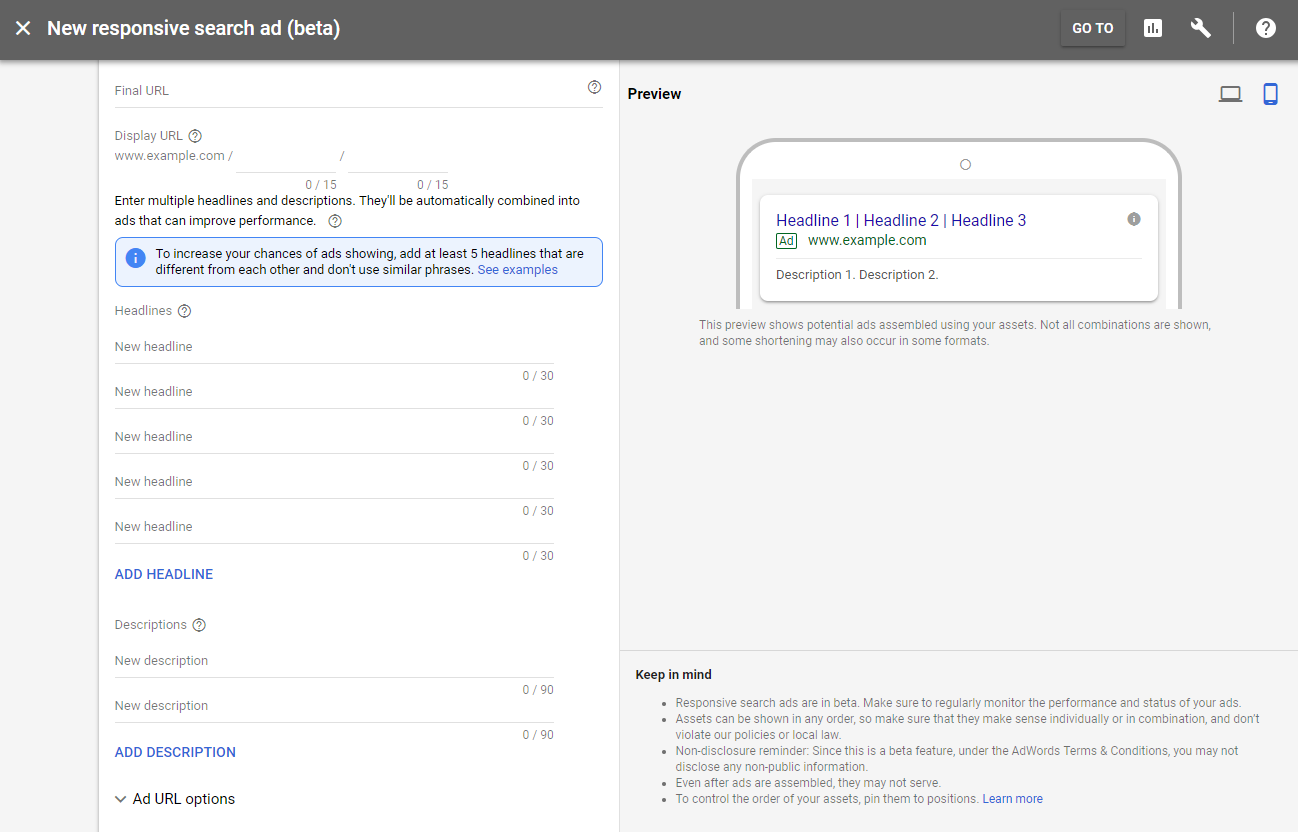Automation Meets Ads
Google hit us with a one-two punch last week. First, In-Market Audiences for Search gave us long-awaited new audience targeting. Second, a new search ad open beta, Responsive Search Ads. With the launch of Responsive Search Ads, Google automation continues its attempted conquest of all facets of managing AdWords.
Here’s what you need to know about how we expect Responsive Search Ads to get the leg up on Expanded Text Ads.
Even More Ad Real Estate?
Just over two years ago, AdWords advertisers were stuck with 95 characters across a headline and 2 description lines. Expanded Text Ads rocked our worlds with two headlines and a slightly longer combined description, raising our total to 140 characters. Could it get any better?
Fast forward to today, Responsive Text Ads allow advertisers to serve three headlines (30 characters each) and 2 description lines (90 characters each). That’s up to 270 characters to convince the searcher that your ad is the right one to click!
More space on the results page is a no brainer. Why wouldn’t you take advantage of the space? Early adopters will certainly get a boost, but this simple expansion of the ad copy is an appetizer to the main course of what really makes Responsive Search Ads a game changer.
Search Ads, Meet Automation
There’s a reason Google isn’t just calling them “Longer Search Ads”, so let’s breakdown the “Responsive” nature of the new ad format. Advertisers will be able to create up to 15 different headline versions (Google recommends creating at least 5 to start) and 4 different description versions in a single ad. Machine learning takes over and begins to figure out the best combinations of three headlines and two descriptions to show to deliver the most relevant and valuable message to searchers.
In a fantastic moment of anticipation, Google built in a “pinning” feature to allow advertisers to have the control of setting a static headline or description in any of the ad copy slots. For example, we may test keeping the university name static in headline 1 or the program name in headline 2.
Thus far, Google expects ad groups to see a click lift of 5-15% when using Responsive Search Ads alongside current Expanded Text Ads.

Don’t Fear the Machines. Embrace Them
At Thruline Marketing, we are the first to embrace innovation’s impact on the digital media space. We see that marketers who take advantage of advancements in automation like Responsive Display Ads will be the ones that win out in the age of automation.
Stay tuned for performance updates from recent launches and more exciting announcements that are sure to come!
Myron Liu, Digital Media Manager